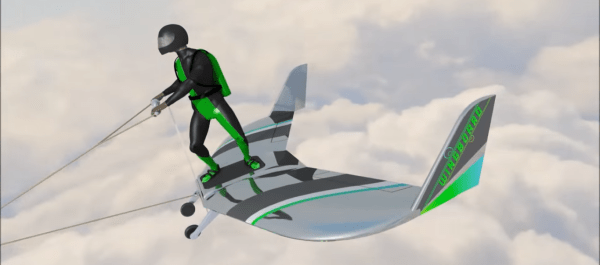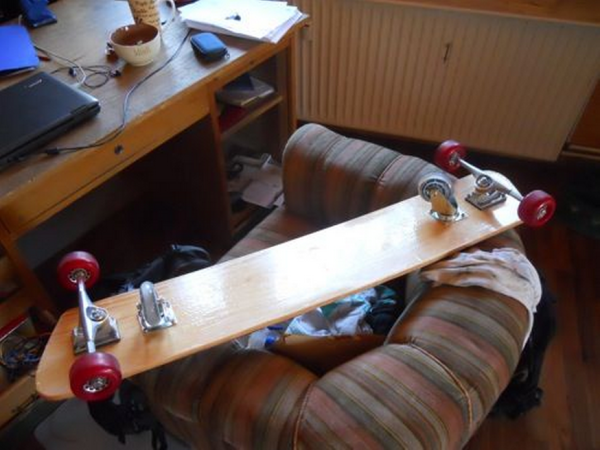For some of you HaD readers it’s winter and heading up to a mountain to go snowboarding is quite convenient. Unfortunately, for the boarder-holics, the off-season comes too quickly and lasts far to long. [jfaneumann] is a snowboarder and wanted to get that same carvey feeling during the summer months so he made a DIY skateboard that rides like a snowboard.
[jfaneumann] didn’t come up with the design, it’s modeled after a commercially available product called the Freebord which is basically an oversize skate deck with extra-wide trucks and integrated pivoting wheels (think casters) in the center of the deck. The pivoting wheels stand a little bit proud of the other 4 wheels which makes the board only ride on the pivoting wheels and two of the remaining wheels at a time. This setup allows the rider to carve, slide and spin down the street like a snowboarder would. This looks like fun to ride but at a cost of about $250 for a Freebord, it’s not cheap.
The project started with a home-made deck simply cut from plywood. To get that extra wide stance standard skateboard trucks were modified. Long coupling nuts were screwed onto the truck axles and epoxied into place. On a normal skateboard the wheel rides on an axle that is part of the truck. Since the axles were covered up by the coupling nuts, bolts were used to secure the wheels to the now much wider trucks.
The pivoting wheels for the Freebord look like standard casters so that’s what [jfaneumann] used for his board. He did remove the rubber wheels and replace them with inline skate wheels with real bearings. Wood shims space the casters away from the deck to put them at the right height compared to the other 4 skate wheels.
In the end, [jfaneumann] got the summer riding experience he desired without spending a boatload of cash.



 Over the last 20 years, [Martin] has been recording snowboarding runs with a standard helmet cam. It was good but he felt like he could improve upon the design by
Over the last 20 years, [Martin] has been recording snowboarding runs with a standard helmet cam. It was good but he felt like he could improve upon the design by 








